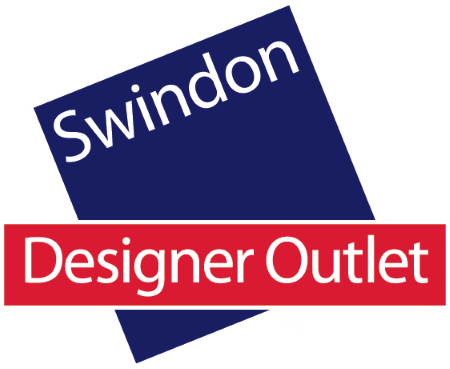In case you missed it see what’s in this section
Let's Talk
Can Bridging Loans Save Your Property from a Chain Collapse?
Property chain collapses are a common and often frustrating issue in the housing market. When one transaction in a linked series of property sales falls through, it can trigger a domino effect, causing multiple deals to fail. Bridging loans offer a solution by providing rapid, short-term funding to keep transactions on track. By acting swiftly, bridging finance can help prevent a chain collapse and ensure the successful completion of a property sale. In this article, we explore how bridging loans can save your property from a chain collapse, highlighting their benefits, risks, and associated costs.
How Do Bridging Loans Help Prevent a Property Chain from Collapsing?
Bridging loans are instrumental in preventing a property chain collapse by providing immediate short-term funding. In a property chain, each transaction depends on the next—if one buyer or seller faces delays, it can jeopardise the entire chain. Bridging loans allow buyers to proceed with their purchase, even if their own sale is delayed or hasn’t yet completed, thereby keeping the chain intact.
By offering quick access to funds, bridging loans ensure that buyers can secure their property while waiting for their own sale to complete, effectively "bridging" the gap and preventing delays that could collapse the chain.
What is a Property Chain Collapse, and How Can Bridging Finance Address It?
A property chain collapse occurs when a transaction in a linked series of property deals falls through. This often happens because of financing issues, legal problems, or changes in the buyer or seller’s circumstances. Once one deal fails, the subsequent transactions are put at risk, which can cause the entire chain to fall apart.
Bridging finance addresses chain collapse by:
Providing Temporary Funding: Bridging loans offer short-term capital to buyers who are waiting for their own property sale or facing mortgage delays.
Enabling Purchases to Proceed: If a buyer’s purchase is held up due to delays elsewhere in the chain, a bridging loan allows them to complete the transaction without waiting for other parties to resolve their issues.
Bridging loans offer a financial lifeline that ensures the property transaction continues despite complications in the chain, reducing the risk of the entire deal collapsing.
Stephen Clark, founder of Finbri, a bridging broker, comments, “Bridging finance is a lifeline in the property market, particularly when a chain collapse threatens a deal. By providing quick access to capital, they help buyers and sellers navigate delays and secure their transactions, preventing entire chains from falling apart.”
How Quickly Can Bridging Loans Be Arranged to Save a Collapsing Property Chain?
One of the key advantages of bridging loans is the speed at which they can be arranged. Bridging finance can typically be secured within 48 hours to two weeks, depending on the complexity of the transaction and the lender’s requirements. This quick turnaround makes bridging loans ideal for saving a property chain on the brink of collapse, where time is critical.
In situations where a delay in securing funds could cause a chain collapse, the fast access to capital provided by a bridging loan can keep the transaction moving, allowing buyers to complete their purchase on time.
What Are the Benefits of Using Bridging Finance in Chain-Break Situations?
Bridging finance offers several advantages for buyers and sellers facing a potential chain collapse, including:
Speed of Access: Bridging loans can be arranged rapidly, often within days, providing immediate funds to keep the transaction on track.
Flexibility: These loans can be tailored to fit the needs of the borrower, whether they need to secure a property before their sale completes or cover a temporary funding gap.
Preventing Property Loss: Bridging loans ensure that buyers do not lose their property due to delays in the chain, allowing them to proceed with their purchase while waiting for the sale of their own home.
Maintaining Transaction Momentum: Bridging finance ensures that the chain keeps moving, reducing the risk of delays that could cause it to collapse.
These benefits make bridging loans an essential tool for protecting property transactions in situations where the chain is at risk.
How Do Bridging Loans Provide the Necessary Funds to Secure a Property During a Chain Collapse?
Bridging loans provide immediate access to capital, allowing buyers to complete a property purchase even if they are still waiting for their own sale to be finalised. The loan is typically secured against the property being purchased, the buyer’s existing property, or both, depending on the borrower’s financial situation and the lender’s terms.
In a chain-collapse scenario, the funds from a bridging loan can be used to complete the purchase, while the sale of the buyer’s existing property proceeds in its own time. Once the sale is completed, the loan is repaid, usually within 3 to 12 months.
This ability to bridge the financial gap ensures that buyers can move forward with their purchase, even when the chain is compromised.
Can Bridging Loans Prevent Delays in Property Transactions That Lead to Chain Collapse?
Yes, bridging loans are specifically designed to prevent delays that could lead to a chain collapse. The speed and flexibility of bridging finance allow buyers to access funds quickly, enabling them to proceed with their purchase without waiting for traditional mortgage approval or the completion of their property sale.
By providing the necessary capital to keep the transaction moving, bridging loans reduce the likelihood of delays causing the chain to break down.
How Do Bridging Loans Offer Flexibility to Buyers and Sellers in a Property Chain?
Bridging loans offer significant flexibility, which is particularly valuable in the context of a property chain. Key aspects of this flexibility include:
Tailored Loan Terms: Bridging loans can be structured to meet the specific needs of the borrower, with flexible repayment terms that align with the timing of their sale or mortgage approval.
Multiple Uses: Buyers can use the funds to complete the purchase of their next property or cover necessary expenses, such as repairs, to make their existing property more attractive to buyers.
Flexible Repayment Options: The loan can be repaid through the sale of the existing property, refinancing with a traditional mortgage, or other financial means.
This flexibility allows buyers and sellers to navigate the challenges of a property chain, ensuring transactions are completed even if delays occur.
What Risks Are Mitigated by Using Bridging Loans in the Event of a Chain Collapse?
By using bridging loans in the event of a chain collapse, buyers can mitigate several key risks:
Losing the Property: Bridging finance ensures buyers have the funds to complete their purchase, even if delays elsewhere in the chain threaten the deal.
Financial Penalties: Buyers may face penalties for failing to complete the transaction on time. Bridging loans provide the capital needed to meet deadlines and avoid these penalties.
Market Fluctuations: If the property market declines while the transaction is delayed, buyers may lose value on their investment. Bridging loans allow them to complete the purchase before unfavourable market changes occur.
By addressing these risks, bridging loans provide greater security and confidence in completing a property transaction.
What Costs Are Involved in Using Bridging Loans to Save a Collapsing Property Chain?
While bridging loans are an effective solution for preventing chain collapse, they do come with costs, including:
Interest Rates: Bridging loans often carry higher interest rates than traditional mortgages, with monthly rates typically ranging from 0.4% to 2%.
Arrangement Fees: Lenders usually charge an arrangement fee, often around 1% to 2% of the loan amount.
Exit Fees: Some lenders charge an exit fee upon repayment of the loan, which can be a flat fee or a percentage of the loan amount.
Valuation Fees: A property valuation may be required, with costs ranging from £300 to £1,000, depending on the property’s value.
Legal Fees: Borrowers are also responsible for covering legal costs associated with drafting the loan agreement and managing the transaction.
These costs should be factored into the borrower’s financial planning to ensure the loan is cost-effective and the property transaction remains profitable.
How Can Bridging Loans Ensure the Successful Completion of a Property Transaction Despite a Chain Collapse?
Bridging loans ensure the successful completion of a property transaction by providing the funds necessary to complete the purchase, even when the property chain collapses. Once the buyer’s existing property is sold or longer-term financing is secured, the bridging loan is repaid, allowing the buyer to proceed without losing their desired property.
In the event of a chain collapse, bridging finance acts as a safety net, ensuring the property transaction can continue without being derailed by external factors.
Conclusion
Bridging loans offer a critical lifeline for buyers facing a property chain collapse. By providing immediate access to funds, these loans allow transactions to proceed despite delays or issues elsewhere in the chain. The speed, flexibility, and ability to bridge short-term financing gaps make bridging loans an invaluable tool for buyers looking to save their property deals. However, it’s important to carefully weigh the costs and risks involved to ensure bridging finance is the right solution for your situation.
Weather in Swindon
Listings





















